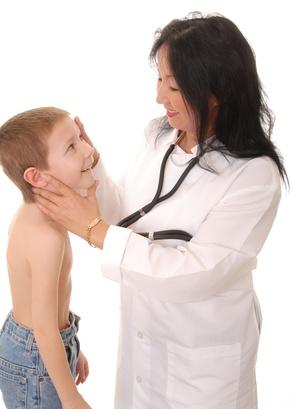The common wart is a grainy, small skin growth that is usually found on the hands or fingers. They are rough in texture and frequently include black dots that are small and clotted blood vessels.
Children develop common warts more frequently than adults and the same is true for those with weakened immune systems. Warts can affect the whole body, but usually occur in moist, warm spots, such as small scratches or cuts on the feet, hands, or fingers. They tend to be painless with the exception of areas that are frequently touched or bumped, such as the bottom of the feet, as the constant contact can irritate the warts.

Causes and Symptoms of Warts in Children
Warts occur due to HPV, the human papillomavirus and they form if the virus invades skin, usually through a tiny scratch or cut. The virus leads to rapid cell growth on the skin’s outer layer.
Kids develop warts or get HPV by touching any item after someone with a wart does, like surfaces and towels. Children that pick at hangnails or bite fingernails have a higher risk of getting warts. They expose the less-protected skin and provide new open areas that a virus can enter. Certain children are at a higher risk than others, such as those with compromised immune systems.
Here are the types of skin warts in children:
|
Types |
Areas |
Symptoms |
|
Common Warts |
Fingers, hands, knees, or elbows |
Dome-shaped, grayish-brown, small, hard bump |
|
Flat Warts |
Faces, arms, knees, or hands |
Flat-toped, pinhead-sized, pink, light brown, or yellow bump |
|
Plantar Warts |
Bottom of the foot |
Brown or yellow, hard bump |
|
Filiform Warts |
Mouth, eyes, or nose |
Flesh-colored, finger-like-shaped bump |
How to Treat Warts in Children
Most of the time, a wart will disappear by itself within a few months to years, meaning the child doesn’t require treatment. No treatment is guaranteed to cure the warts. If your doctor suggests treatment, follow their instructions exactly. They will likely use more than one treatment at a time. Talk with your doctor before using any over-the-counter wart medicine on your child’s face or other body parts.
Before using medication, make sure that your child:
Soaks the wart in warm water and removes the dead skin on the surface of the wart with emery board.
1. Topical Salicylic Acid and Medical Tape
Most doctors start off by recommending topical salicylic acid. You can find solutions of 17% salicylic acid in drugstores. After taking a shower or bath, you child will need to apply the medication and it should completely cover the wart. After the medication dries, you should use cloth medical tape to cover your child’s wart. The tape will loosen or fall off after 1 or 3 days, at which point you should remove it, apply more medication, and re-tape it until the wart disappears. If the skin becomes irritated, pause treatment for several days, but remember the treatment may take a few months.
2. Over-The-Counter Cryogen (Cold) Spray
If the wart doesn’t disappear within a few weeks, you can use an over-the-counter cryogen spray. You should apply the medication carefully to your child’s wart as well as the area about 1 to 2 millimeters around it. Repeat the treatment every 2 or 4 weeks. Keep in mind it may be slightly painful and your child should keep using the salicylic acid at the same time. Occasionally, the disappearance of one wart will lead to the others vanishing as well.
How to Prevent Warts in Children
Children can pick up the HPV virus in multiple ways, such as sharing toys or towels, or simply playing with some friends. However, you can reduce the risk of your child getting warts by following some tips:
- Always have your child use flip-flops in public showers or around public swimming pools.
- If someone in your home has an issue with plantar warts, encourage the one (if old enough) to use a dilute solution of bleach to clean the bathtub or shower after using it. Spray the solution, and then rinse it off.
- Make sure that each child uses their own hand and bath towel, without sharing.
- Encourage your child to not bite his fingernails or pick at hangnails.
- Be careful with warts by avoiding combing, clipping, brushing, or shaving parts of the skin that contain warts. When you touch warts, be sure to carefully wash your hands.
- If you use tools such as pumice stones or nail files to reduce the size of wars, never use the same tools on areas that do not contain warts.
- Encourage your children not to pick at warts as this can spread the virus. Covering them with bandages should prevent the urge to pick at them.
- Try to keep hands dry as warts are harder to control in a moist area.
When to See a Doctor
Most of the time, you won’t need to see a doctor for a common wart. However, if the wart is a cosmetic concern, is spreading, or is simply annoying, you can visit a doctor. Before removing a wart, you should also call a doctor if:
- A child (any age) has one or more warts on their rectum, genitals, or face
- Your infant or young child has warts anywhere on the body
- The wart, or the skin surrounding it, is oozing pus, swollen, bleeding, red, or painful
Keep in mind that despite being annoying, warts are fairly common during childhood and won’t usually lead to serious problems.